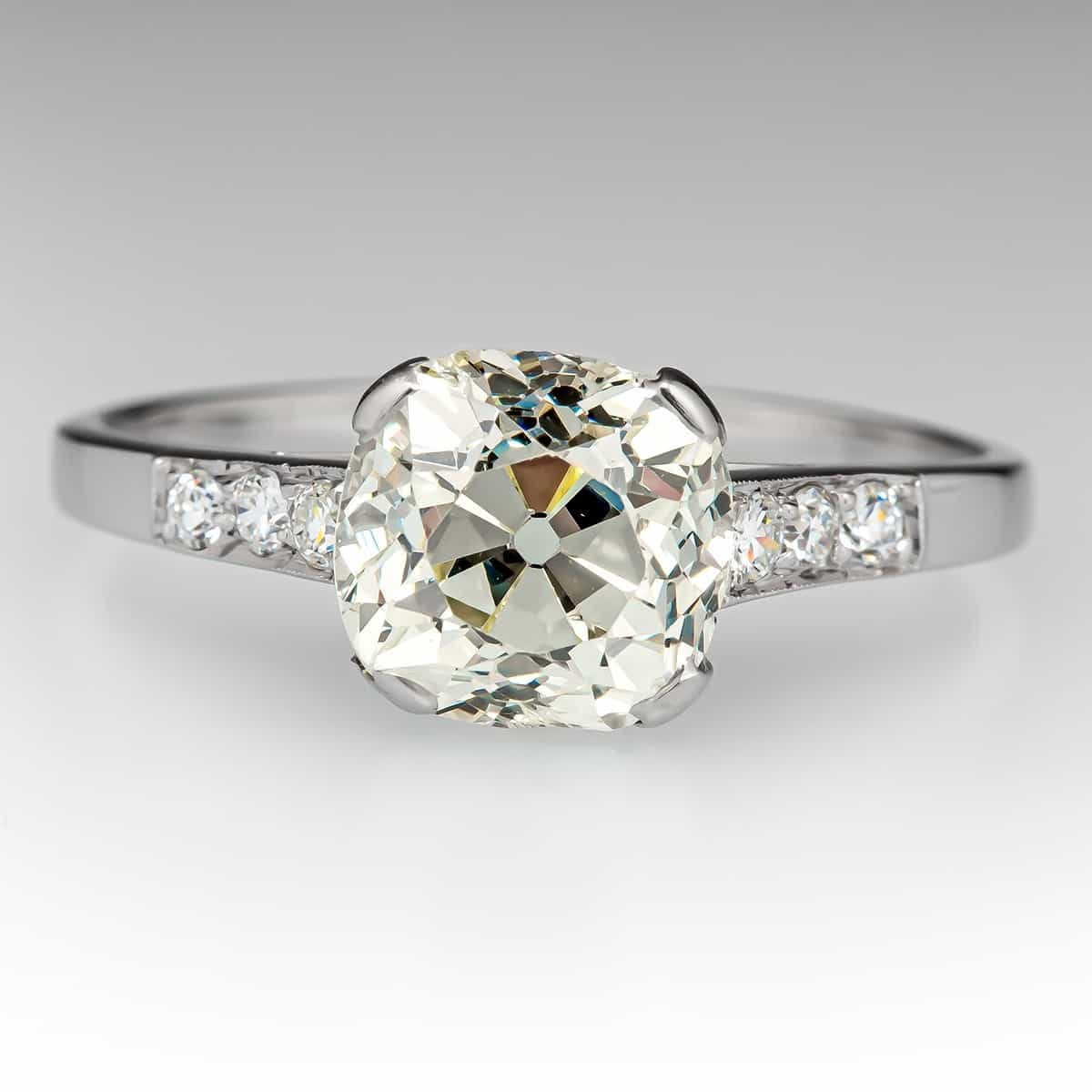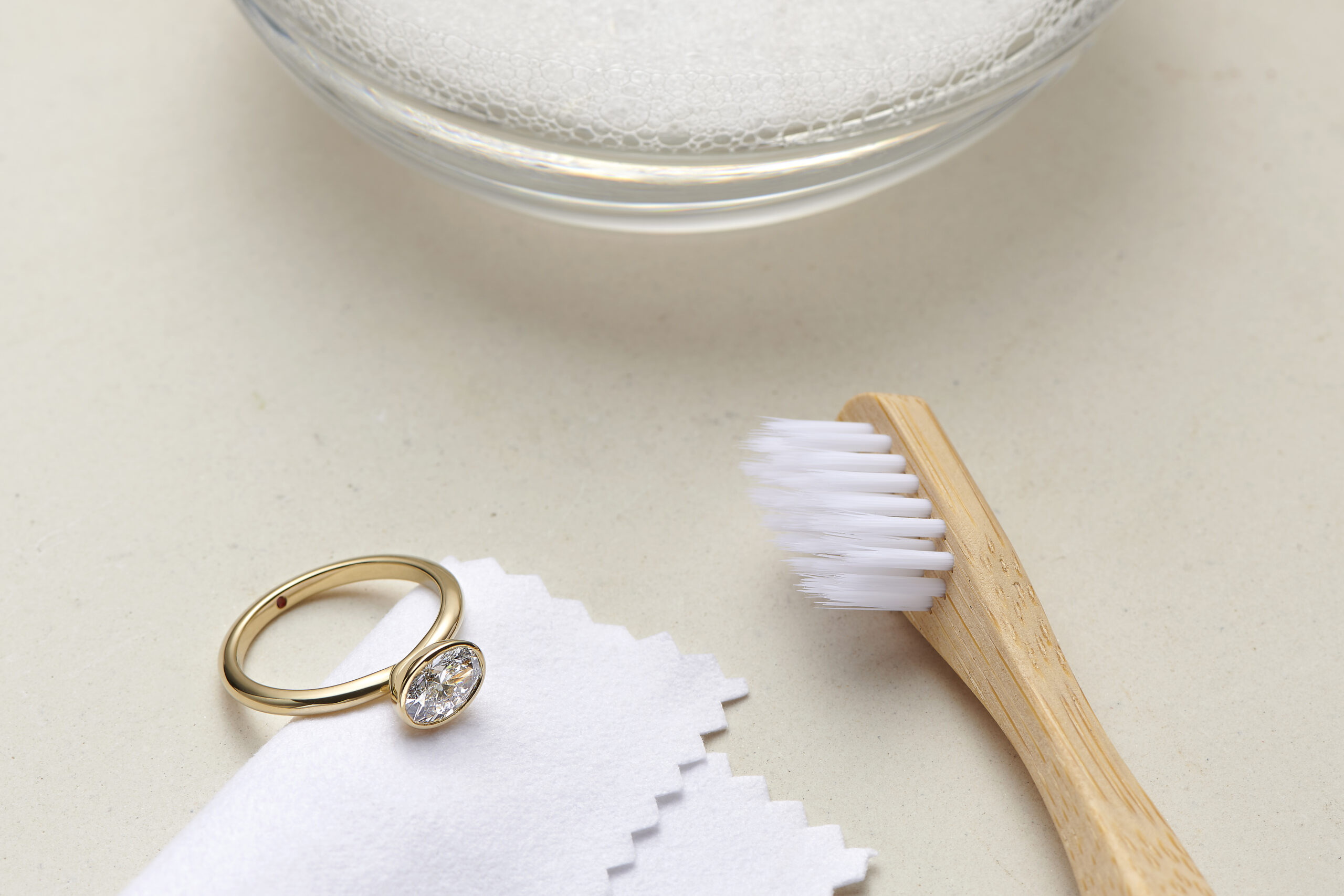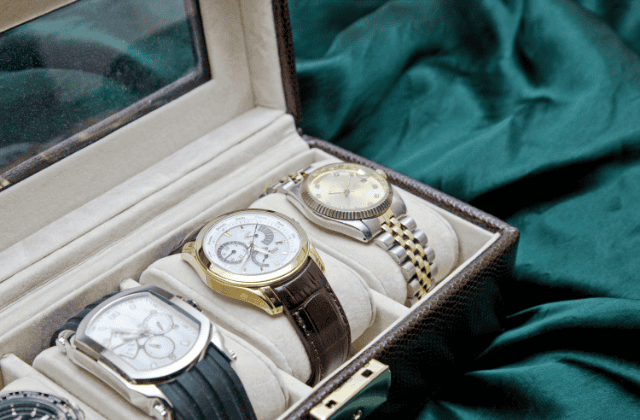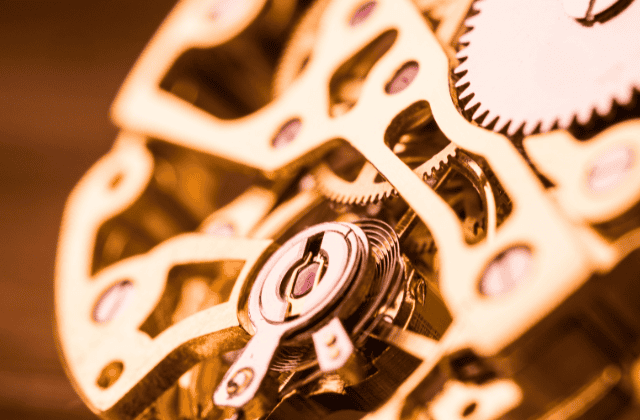Did you know that Old Mine Cut diamonds were one of the first diamond cuts to have all the facets of the modern round brilliant cut, albeit in a more unrefined form?
That’s right; this antique diamond cut is a fascinating precursor to the sparkle and brilliance we associate with diamonds today.
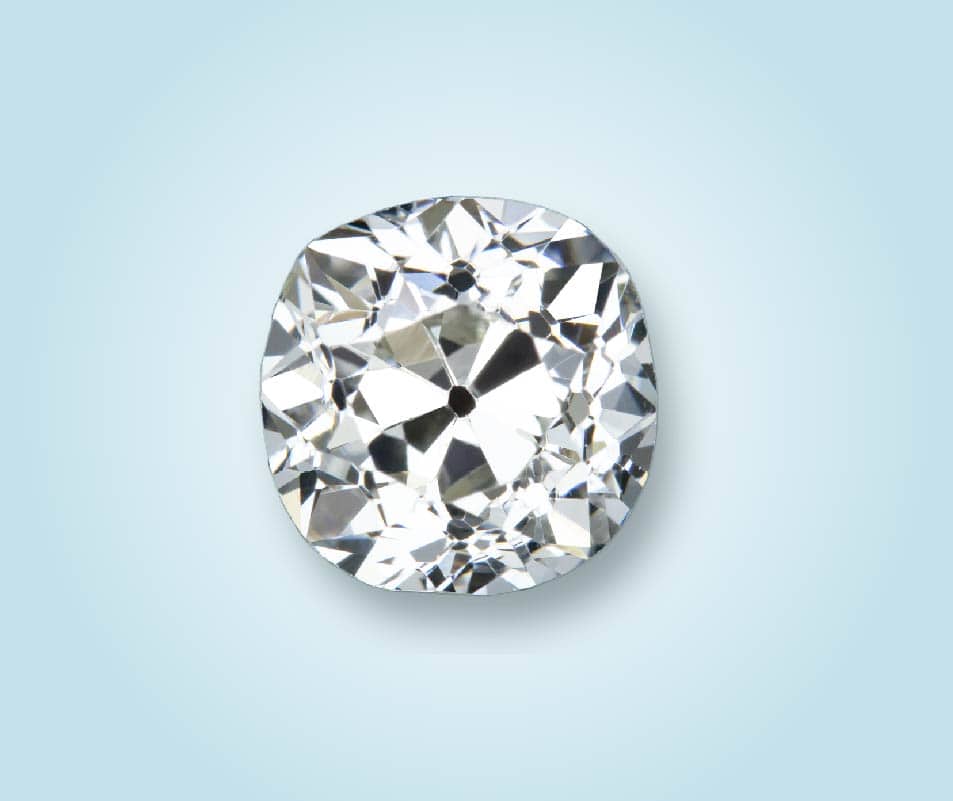
Now, most people are all about the scintillating princess cuts and dazzling emerald cuts that grace modern-day engagement rings and necklaces. But there’s a forgotten hero in this shimmering tale—the Old Mine Cut diamond. And I’ll tell you all about it.
The History of Old Mine Cut Diamonds
Originating in the 18th and 19th centuries, the Old Mine Cut diamond was born in an era when gem-cutting technology was in its infancy. The term itself—”Old Mine”—references the original Brazilian and Indian mines where these diamonds were primarily excavated. During that time, the art of diamond cutting was less about mathematical precision and more about the craftsman’s skill and intuition. Hence, these diamonds have a peculiar, almost unpredictable allure.

Majhgawan diamond mine, India
Geography: The “Old Mines”
The Old Mine Cut diamonds owe their name to the ancient mines of Brazil and India. Back then, these countries were among the primary sources for diamonds, before the great South African mines like Kimberley came into play. In fact, Brazil was so prominent in the diamond world that “Brazilian diamonds” became synonymous with quality during the 18th century. India, too, contributed significantly, its diamonds often journeying through the Silk Road to end up in the courts of Europe.
Context: Place in the Timeline of Diamond Cuts
Before the Old Mine Cut, diamonds were usually cut in what is known as the “Table Cut” or the “Rose Cut,” which were rudimentary forms at best. Following the Old Mine Cut, technological advancements led to the development of the Old European Cut and, ultimately, the Modern Round Brilliant Cut. The Old Mine Cut diamond serves as a crucial bridge between ancient traditions and contemporary brilliance, capturing a specific moment in the technological and aesthetic evolution of modern diamonds.
What are Old Mine Cut Diamonds? Key Characteristics
Facets: Fewer Yet Larger
When you behold an Old Mine Cut diamond, one of the first things you’ll notice is the facet structure. Unlike the 57 or 58 facets typical in modern Round Brilliant Cut diamonds, Old Mine Cut diamonds generally contain around 58 facets—but they’re more sizable and less geometrically exact. This results in a subtler dance of light, which many describe as more romantic or nostalgic compared to the flashy brilliance of modern diamonds.
Shape: Rounded Squares and Cushions
The overall shape of an Old Mine Cut diamond leans toward a soft, cushioned square. It’s not as angular as a Princess Cut nor as perfectly round as a Round Brilliant. This more flexible shaping allows each diamond to express a certain degree of individuality. As a result, when you own an Old Mine Cut, it’s highly likely that its shape is rather singular—an embodiment of the specific diamond’s raw form and the cutter’s approach.
Culet: Large and in Charge
The culet—the small facet at the bottom of the diamond—is notably large in Old Mine Cut diamonds. In modern cuts, this facet is often so small as to be nearly invisible, but in Old Mine Cut diamonds, it’s a defining feature. Some say this lends the diamond a more vintage or old-world charm, as the culet often resembles a tiny window into the heart of the stone.
Table: Smaller but Significant
The table of an Old Mine Cut diamond—that’s the large, flat facet on top—is generally smaller than what you’ll find in modern counterparts. This leads to a distinct ratio between depth and spread, which often produces a more subdued fire.
Symmetry: Character Over Consistency
One fascinating aspect of Old Mine Cut diamonds is that they’re often not perfectly symmetrical. In today’s laser-focused world of diamond cutting, where every facet must align just so, the Old Mine Cut stands out for its handmade quality. Whether due to the diamond cutter’s unique approach or the characteristics of the original stone, each Old Mine Cut diamond offers a touch of unpredictability.
The Contemporary Relevance of Old Mine Cut Diamonds
Old Mine Cut diamonds serve as cherished relics in this era where technological marvels and algorithmic precision often overshadow the natural and the handcrafted. They invite us to pause and appreciate the beauty of imperfections, the history embedded within each facet, and the magic that happens when human artistic expression is set upon nature’s gifts.
Far from being an outmoded choice, they resonate with contemporary sensibilities, marrying the past’s romance with today’s values.
Antique Ring from Eragem
Rarity: A Unique Gem in a Sea of Uniformity
As the demand for modern, precision-cut diamonds dominates the market, the Old Mine Cut diamond becomes increasingly rare. Yet, its scarcity contributes to its allure. For those desiring a diamond that stands apart from the ubiquity of Round Brilliant and Princess Cut diamonds, an Old Mine Cut offers a breath of fresh air—a tangible connection to a different epoch.
Vintage Appeal: An Antiquarian’s Dream
I think there’s something irresistibly romantic about wearing a piece of history. Old Mine Cuts are often found in vintage or heirloom jewelry. Whether it’s a Victorian-era brooch or an Edwardian engagement ring, these antique diamonds add a decadent touch that elevates the piece from merely old to historic.
Via Eragem
Ethical Considerations: A Step Towards Sustainability
As today’s diamond industry is embracing sustainability and ethical sourcing, Old Mine Cut diamonds are being recognized as an alternative that embraces these eco-conscious values. Many of these diamonds have been passed down through generations or repurposed from antique jewelry, thus reducing the environmental impact associated with new mining operations.
Old Mine Cut Diamond vs Modern Cut Diamonds

Light Reflection: Glow Versus Sparkle
The way an Old Mine Cut interacts with light is noticeably different from modern cut diamonds. Owing to its larger, fewer facets, an Old Mine Cut diamond produces a kind of glow rather than the high-intensity sparkle that Round Brilliants are renowned for. It’s akin to the soft, diffuse light of a setting sun compared to the pinpoint brightness of a star.
Complexity: Patterns and Depths
Due to the variable sizes of its facets and its less-than-perfect symmetry, the Old Mine Cut diamond exhibits perplexing patterns of light and shade. While it may not achieve the well-calibrated “fire” of modern stones, it compensates with a sense of depth and complexity that’s almost painterly in its expression. It’s like comparing a Rembrandt portrait to a photograph—both beautiful but profoundly different in their intricacy and emotional impact.
Uniqueness: The One-of-a-Kind Factor
Modern diamond cutting often aims for uniformity, leveraging advanced technology to create stones that are almost identical in their brilliance and fire. In contrast, the Old Mine Cut, crafted in a time before such technology, radiates an individualistic flair. No two Old Mine Cut diamonds are precisely alike, and I love it! This means each stone is truly a unique work of art.
Old Mine Cut vs Old European Cut Diamond
Facet Structure: A Nuanced Difference
At first glance, both the Old Mine Cut and the Old European Cut diamond might seem indistinguishable. However, the devil is in the details—or more precisely, in the facets. Old Mine Cut diamonds typically have a somewhat irregular facet structure with 58 facets, much like the Old European Cut. Yet, the Old European Cut is generally more symmetrical, marking a transitional phase in diamond cutting toward the precision we see in modern Brilliant Cut diamonds.
Crown and Pavilion: Subtle Variations in Depth
While both cuts feature high crowns and deep pavilions, their angles can vary. Old Mine Cuts often have a more rounded square shape, sometimes described as a “soft square,” compared to the circular geometry of the Old European Cut. These variations in shape subtly affect how light interacts with the stone, with the Old European Cut diamond producing more “fire” or color dispersion.
Culet Size: A Window to the Past
Both cuts often feature an open culet—the small facet at the bottom of the diamond. However, the culet in an Old Mine Cut tends to be larger, creating what some describe as a “window” that allows you to look directly through the diamond. This characteristic adds a unique, vintage appeal to the Old Mine Cut.
Historical Context: Different Eras, Different Techniques
The Old Mine Cut dates back to the early 18th century and was most popular during the Georgian and Victorian eras. The Old European Cut gained prominence a bit later, during the late Victorian era through the Edwardian and Art Nouveau periods. Though both emerged before the advent of modern cutting technology, the Old European Cut reflects advancements in cutting techniques and is often seen as a precursor to the modern Brilliant Cut.
Aesthetic Appeal: Two Flavors of Vintage Charm
The choice between an Old Mine Cut and an Old European Cut diamonds often comes down to personal preference. If you are drawn to a diamond with more geometric uniformity while still retaining a vintage feel, an Old European Cut diamond might suit your taste. Conversely, if you prefer a diamond with a distinctive, hand-crafted personality—each one a unique creation with its own idiosyncrasies—the Old Mine Cut offers that in spades.
Tips for Buying an Old Mine Cut Diamond
Old Mine Cut Diamond from Ivy and Rose
What to Look For: Beyond the 4 Cs
When considering an Old Mine Cut diamond, the traditional 4 Cs—Carat, Cut, Color, and Clarity—still apply, but with a twist. Given the historical and artisanal nature of these diamonds, special emphasis should be placed on the cut and the character of the stone. I look for uniqueness in facet structure, an appealing glow, and facets that are not too “perfect,” which can add to its vintage charm.
Trusting Certification: The Importance of Provenance
Given that Old Mine Cut diamonds often have a storied past, I can not overstate the importance of certification. Reputable labs and gemological institutes can provide a certificate that verifies not just the antique diamonds’ 4 Cs, but also their origin and any treatments they might have undergone. Ensure you’re looking at certificates from well-known organizations like the Gemological Institute of America (GIA) or the International Gemological Institute (IGI).
Market: Navigating the Maze
Old Mine Cut diamonds are not as readily available as modern cuts, but they can be found. My key sources include auctions, specialized antique jewelers, and estate sales. Online platforms may also offer some choices, but they come with the caveat of not being able to inspect the stone physically before purchase. If you opt for the online route, make sure there is a solid return policy and that the diamond comes with a reliable certification.
FAQs on Old Mine Cut Diamonds
How is the durability of an Old Mine Cut diamond compared to modern cuts?
The Old Mine Cut diamonds, like all diamonds, are exceptionally hard and resistant to scratches. However, due to their larger culet and often thinner girdles, they might be more susceptible to chipping if not set or handled carefully. That being said, with proper care, they can last for generations.
Can Old Mine Cut diamonds be recut into modern shapes?
Yes, it’s technically possible to recut an Old Mine Cut diamond into a modern shape, but it’s worth considering the loss in carat weight and potential reduction in value from altering a vintage gem. Such decisions should be made carefully, weighing the historical significance and unique aesthetic of the original cut against personal preferences or market trends.
Are Old Mine Cut diamonds considered less valuable than modern cuts?
While the Old Mine Cut may not possess the precision-cut facets and maximum light performance of modern Brilliant Cuts, its value lies in its historical significance, unique aesthetics, and rarity. Especially in recent years, there’s been a resurgence in interest in antique diamonds and vintage jewelry, making Old Mine Cut diamonds increasingly sought after by collectors and enthusiasts.
How much does an Old Mine Cut diamond cost?
The price of an Old Mine Cut diamond can vary widely based on several factors, including its carat weight, color, clarity, and overall quality. Generally, due to their rarity and increasing demand in the vintage market, Old Mine Cut diamonds might command a premium. But they can sometimes be more affordable than modern cuts of similar carat and quality, especially if they exhibit certain imperfections that are characteristic of their hand-crafted nature.
It’s also worth noting that the provenance or historical significance of a particular Old Mine Cut diamond can significantly influence its price. As always, I recommend buying from reputable dealers and consider having the stone appraised to ensure you’re getting fair value.
How can I identify a genuine Old Mine Cut diamond?
Look for the distinctive features: a squarish shape with gently rounded corners, a high crown, a deep pavilion, and a large, open culet. The facets tend to be larger and fewer compared to modern cuts. Additionally, the Old Mine Cut might exhibit some asymmetry, given the hand-crafted techniques of the time. Consulting with a gemologist or a certified appraiser can also help confirm the authenticity and provide insights into its quality.
Are Old Mine Cuts antique diamonds?
Yes. The term “antique” generally refers to an item that’s at least 100 years old. Since the Old Mine Cut was predominantly used in the 18th and 19th centuries, it squarely fits within this classification. These diamonds hark back to a time when each gem was hand-cut, reflecting the artisan’s skill and the diamond’s individual characteristics. As a result, Old Mine Cut diamonds are not only antique diamonds in age but also in craftsmanship and aesthetic appeal, making them particularly cherished by vintage jewelry enthusiasts.
Is an Old Mine Cut diamond good for an engagement ring?
Definitely! Old Mine Cut diamonds have a unique charm and vintage appeal that many find captivating. Their distinctive faceting creates a warm and romantic glow, different from the more common modern cuts. This makes them a popular choice for those seeking a ring with a touch of nostalgia and individuality.
Moreover, given their historical significance, they can add a timeless and storied element to an engagement ring. It’s essential, however, to ensure the diamond is properly set to protect its unique features, like its larger culet and softer edges. With the right setting, an Old Mine Cut diamond can be a stunning and meaningful centerpiece for an engagement ring that stands out from the crowd.
Timeless Charm and the Old Mine Cut
In the diamontology realm, the Old Mine Cut diamond stands out, not just for its vintage flair but for the genuine history it embodies. It’s a bit like finding a classic book in a world of e-readers; there’s a tangible depth and story to it. While today’s diamonds are crafted for maximum sparkle, the Old Mine Cut offers a blend of artistry and history that’s hard to find elsewhere. It’s got that unique character—a blend of craftsmanship from days gone by and the timeless allure of a classic.
If you have a penchant for items with a story, or if you’re just curious about diamonds beyond the usual, the Old Mine Cut is a fascinating journey waiting to be explored


